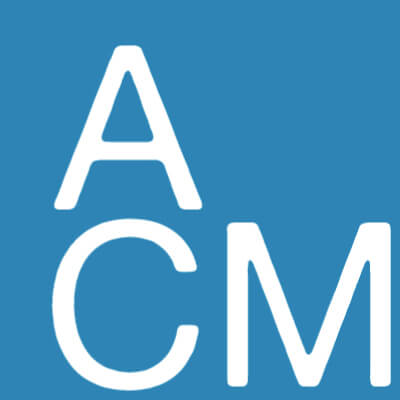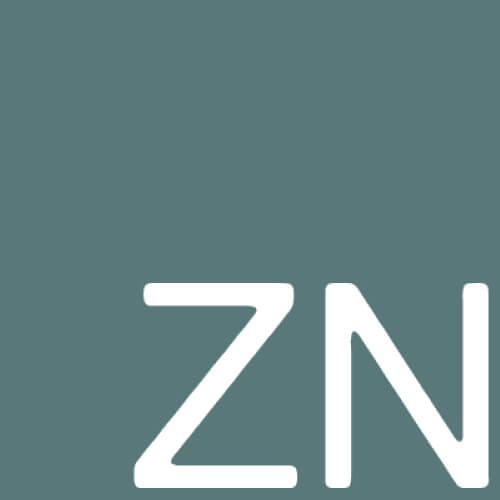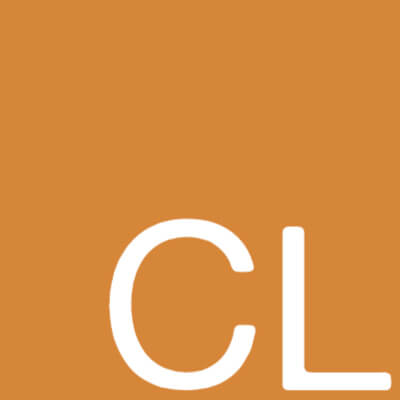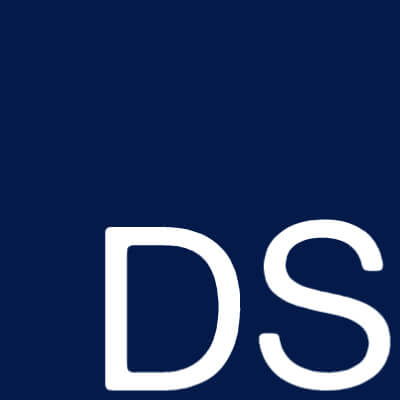SECTION 07 42 53 – CONCEALED FASTENER WALL PANELS
NorthClad® CF Panel System
Published: November 2019
Part 1 General
1.1 SUMMARY
Section Includes:
Concealed fastener plate panel dry joint, drained, back-ventilated rainscreen system.
B. Related Sections:
Section 054000 – Cold-Formed Metal Framing
Section 061000 – Rough Carpentry
Section 061643 – Gypsum Sheathing
Section 072500 – Air Barriers
Section 076200 – Sheet Metal Flashing and Trim
Section 079200 – Joint Sealants
1.2 REFERENCES
Reference Standards: Current edition at date of Bid.
ASTM International:
ASTM B 117 – Standard Practice for Operating Salt Spray (Fog) Apparatus
ASTM D 294 – Method of Tumbler Test for Coke
ASTM D 659 – Method of Evaluating Degree of Chalking of Exterior Paints
ASTM D 968 – Standard Test Methods for Abrasion Resistance of Organic Coatings by Falling Abrasive
ASTM D 2244 – Standard Practice for Calculation of Color Tolerances and Color Differences from Instrumentally Measured Color Coordinates
ASTM D 2247 – Practice for Testing Water Resistance of Coatings in 100% Relative Humidity
ASTM D 3352 – Standard Test Method for Strontium Ion in Brackish Water, Seawater, and Brines
ASTM E 84 – Standard Test Method for Surface Burning Characteristics of Building Materials
ASTM E 283 – Standard Test Method for Determining Rate of Air Leakage Through Exterior Windows, Curtain Walls, and Doors Under Specified Pressure Differences Across the Specimen
ASTM E 330 – Standard Test Method for Structural Performance of Exterior Windows, Doors, Skylights and Curtain Walls by Uniform Static Air Pressure Difference
ASTM E 331 – Standard Test Method for Water Penetration of Exterior Windows, Skylights, Doors, and Curtain Walls by Uniform Static Air Pressure Difference
1.3 ADMINISTRATIVE REQUIREMENTS
Coordination: Conform to Section 013113 for coordination with work of other Sections.
Section 072500 for application of air barrier over gypsum sheathing substrate specified Section 061643 following installation of sub girt system as required to seal and make a continuous air barrier.
Preconstruction Meetings: Conform to provisions of Section 013119.
Attendance: Contractor, Applicator, Owner, Architect, and those specifically requested to attend.
Review and finalize construction schedule and verify availability of materials, installer’s personnel, equipment, and facilities needed to make progress and avoid delays.
Review methods and procedures related to aluminum metal panel installation, including manufacturer’s written instructions.
Examine support conditions for compliance with requirements, including alignment between and attachment to the structural members.
Review flashings, special details, wall penetrations, openings, and condition of other construction that will affect aluminum wall panels.
Review governing regulations and requirements for insurance, certificates, and tests and inspections if applicable.
Review temporary protection requirements for aluminum wall panel assembly during and after installation.
Review wall panel observation and repair procedures after aluminum wall panel installation.
Meeting Time: Minimum 3 weeks prior to beginning work of this Section and related work affecting work of this Section.
Location: Project Site.
1.4 DESIGN REQUIREMENTS
Components: Designed and manufactured to withstand dead and live loads caused by positive and negative wind pressure acting normally to plane of composite wall panels in accordance with International Building Code, Chapter 16.
Wall Panel Deflection: L/180.
Perimeter Framing Deflection: L/180.
Thermal Movement: Design system to accommodate vertical and horizontal thermal movement of components without causing distortion, excessive stress on fasteners, and oil canning when subjected to recurring temperature variations.
Drainage: Design for positive drainage of water leakage and condensation to exterior of wall panel system.
Tolerance of Substructure: Design system to accommodate up to ¼ inch in 10 feet variation out of plane.
Seismic Design: Conform to International Building Code for the Seismic Category appropriate for location of system installation.
1.5 PERFORMANCE REQUIREMENTS
Provide following testing documentation. Testing documentation must be current and meet or exceed specified design and performance requirements, and documented and certified by an independent testing agency acceptable to Architect and applicable building code jurisdiction.
Rainscreen Panel Type: 0.3125” Phenolic Sheet-
Air Infiltration in accordance with ASTM E 283 (at 6.24 pounds per square foot): Less than 0.10 cubic feet per minute per square foot.
Water Penetration in accordance with ASTM E 331: Full pass at 25.00 pounds per square foot, 30.00 pounds per square foot, and 35.00 pounds per square foot.
Structural Performance in accordance with ASTM E 330 (at 75.00 pounds per square foot):
Maximum Deflection: L/180.
1.6 SUBMITTALS
Submit under provisions of Section 013300.
LEED Credits: Conform to Section 018113 for documentation of LEED Credits contributing to Certification of Project under USGBC LEED 2009 (Version 3.0) Green Building Rating System for sustainable building requirements.
Buy American Act Certification: Submit documentation certifying that products comply with provisions of the Buy American Act 41 U.S.C. 10a-10d.
Product Test Reports: Indicate compliance of products with requirements from qualified, independent testing agency.
Shop Drawings: Provide drawing details prepared by manufacturer or manufacturer’s authorized agent showing openings and penetrations. Include details of each condition of installation and attachment. Provide details at a minimum scale of 1 ½ inch per foot of all required trim needed for complete installation. Provide shop drawings reflecting deviations from manufacturer’s standard details and details differing from Contract Documents. Include components, panel profile, dimensions, joinery dimensions, configurations, and reason for deviation.
Product Data: Manufacturer’s technical data, installation instructions, standard detail drawings specific to this project, and accessories showing conformance with specified requirements.
Fasteners, including clips, fastener types, and locations.
Treatment at edges, terminations, and flashings.
Indicate provisions for thermal expansion and contraction.
Product Samples: 3 ½” x 3 ½” showing metal gauge, profile and specified finish for each specified wall, soffit panel reflecting the color sample illustrating accepting finish and each color selection.
Manufacturer’s Instructions: Indicate installation requirements, rough-in dimensions, special procedures, and conditions requiring special attention.
1.7 QUALITY ASSURANCE
Manufacturer Qualifications:
Minimum of 10 years’ experience in fabricating and supplying metal wall panel systems.
Responsible for technical design support as required for system conforming to panel manufacturer’s warranty provisions.
Provide review and approval of shop drawings differing from panel manufacturer’s standard details prior to installation and conduct interim inspections during construction.
Installer: Qualifications:
Able to document a minimum 7 years’ experience installing commercial metal wall panel systems.
Trained and authorized by metal wall panel manufacturer prior to Bid Date.
Employ job-site foreman, with minimum of 3 years’ experience supervising installation of metal wall panel work of this Section, dedicated to Work of this Contract.
Foreman: Continuously on site for duration of work of this Section for this Project.
Single Source Responsibility:
Perform panel and related flashing and sheet metal work by or under supervision of single installer.
1.8 WARRANTY
Contractor: 5-year labor warranty for panel installation, including, flashings, sealants, fasteners, and accessories to remain watertight and weatherproof.
Part 2 Products
2.1 SYSTEMS
Concealed fastener panel dry joint, drained, back-ventilated rainscreen system.
2.2 MANUFACTURERS
Subject to compliance with requirements, provide products manufactured by NorthClad, 11831 Beverly Park Road, Building C, Everett, Washington 98204, telephone 425-740-3702, E-mail: dkillian@northclad.com Website: www.northclad.com
NorthClad CF: Prefinished NorthClad CF Series wall panel system.
Submit alternate tested systems by other manufacturers/fabricators to architect not less than 30 days prior to bid.
2.3 MATERIALS
Panel Skin Material:
Phenolic material at least 10mm in thickness
Components: 0.090-inch structural Alloy 6061T6 extruded aluminum horizontal rail, 0.090-inch structural Alloy 6061T6 extruded aluminum panel clips
Tolerances:
Panel bow not to exceed L/180 of panel overall dimension in width or length.
Panel dimensions allow for field adjustment and thermal movement.
Panel lines to be sharp, smooth, and free from warps or buckles
Condition: Panel surfaces to be free of scratches and marks caused by fabrication.
Uniformity: Manufacture entire project from a single-color finish run to ensure color uniformity. Under no circumstances are panel blank sizes to be rotated even if the result is increased waste.
Vapor Management: Fabricate panels for control of condensation and ventilation of the rainscreen cavity.
Custom Fabrications: Include fabrications, whether specifically indicated or not, to complete a watertight and finished system.
2.4 FABRICATION
Standard Fabrications: Routed Stonewood sheets required to maintain tolerances.
Tolerances:
Not to exceed L/180 percent of panel dimension in width and length for panel bow.
Allow for field adjustments as recommended by the manufacturer where final dimensions cannot be established by field measurement before completion of panel manufacturing.
Eliminate all warping and/or bucking in panel lines, breaks, and angles.
Eliminate all scratches and marks caused by the fabrication from panel surfaces.
2.5 FASTENERS
Supply Fasteners and clips tested to meet provisions of this section, as approved by fastener manufacturer and engineer of record.
Concealed Sheet Metal Fasteners: Panhead, self-drilling, self-tapping, non-corrosive fasteners, and as instructed by manufacturer and engineer of record.
Fastener Lengths: Penetrate cold-formed metal framing and sub girts, and other metal framing systems in accordance with the fastener manufacturer’s recommendations.
2.6 SYSTEM COMPONENTS
Horizontal Drip Flashing: 0.032-inch aluminum.
Outside Corners: 0.032-inch aluminum.
PART 3 EXECUTION
3.1 EXAMINATION
Verify installation conditions satisfactory to receive work of this Section before beginning.
Verify substrate installation complete, flat, and true to plane.
3.2 PREPARATION
Field Measurements: Verify prior to fabrication of metal panels and flashings.
Electrolytic Protection: Treat contacting surfaces of dissimilar metal of different galvanic range with non-absorptive tape, gaskets, or as instructed by manufacturer.
Protect surrounding areas and surfaces to preclude damage during work of this Section.
Lay out work before beginning installation as necessary for true, plumb, and aligned panel installations. Verify locations of joints and panel lengths.
Prior to installation ensure building surface is true and plumb.
3.3 INSTALLATION
Conform to manufacturer’s instructions and provisions of Contract Documents.
Coordinate blocking requirements in stud walls.
Install to allow thermal expansion of panels.
3.4 PANEL GIRTS AND FASTENERS
Space, locate, align, and fasten sub girt hat channel framing over gypsum sheathing after application of air barrier specified by Section 072500.
Install fasteners in lengths and locations to penetrate hat channels and structural metal wall framing in accordance with fastener manufacturers’ instructions.
Torque screws as necessary for snug fit. Do not over-torque to prevent damage to panels.
3.5 WALL PANELS
Use appropriate techniques for the material selected. Inquire with NorthClad.
Do not stretch or compress panels.
Secure panels in place with panels aligned and without warp or deflection.
Make cutting and fitting neat, square, and true. Where required cut, de-burr edges, and clean filings from adjacent surfaces.
When used in a soffit application the standard details vary. Please contact manufacturer.
3.6 FLASHINGS
Install flashings as part of manufacturer system as necessary to seal and close ends and to restrict water penetration behind wall panels.
Thermal Movement: Install flashing systems to allow unrestricted thermal movement of metal panels.
Penetrations: Make cutouts and edge clearances of sufficient size and shape to allow unrestrained thermal movement and to prevent contact of metal panels with penetrations.
Metal Flashing:
Notch and fold down flashing running parallel to panel ribs to fit into space between ribs.
Make overlaps minimum 4 inches and in conformance to Section 076000.
Cutting and Fitting: Make neat, square, and true. Saw-cut panels, de-burr edges, and clean filings from adjacent surfaces. Do not cut with torch. Use high tooth-count saw blade designed to cut architectural sheet metal.
3.7 FIELD QUALITY CONTROL
Water test weather resistive barrier prior to installation of cladding.
3.8 ADJUSTING
Correct identified defects and irregularities.
Replace damaged, soiled, and discolored work.
3.9 CLEANING
Leave installation clean and free from residue and debris from work of this Section.
3.10 PROTECTION
Take measures to protect metal panel installations from construction activities for duration of Project. Do not permit activities that may result in gouging, scratching, or denting metal panels and flashing.






